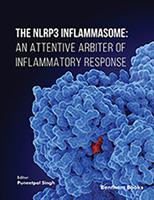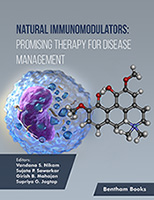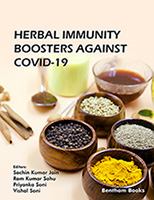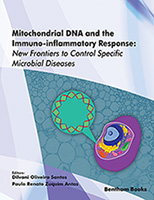This book is intended to familiarise the reader with the history, development, terminology and theoretical considerations associated with the development, production and use of Immunoassays. The reader will be led through the theoretical and practical considerations associated with antibody, production and then into the practical applications and complications of antibody’s use in assays. Finally there are a series of chapters on specific applications and future technologies, ending with a chapter on Aptamers which may represent an alternative to antibodies and the future of assay development.
This foreword will recount the theories and discoveries which have led to the explosion in commercial immunoassays and to their development as powerful research tools.
The chapters provide details of the development of immunoassays establishing an “evolutionary tree”, the path of events and the stages which have been reached and possible directions for future research and developments. The relationship between immunoassays and other analytical techniques is presented clearly and there are indications as to potential future developments.
Modern immunoassays have arisen from the desire to detect and quantify complex biological molecules under conditions for which chemical and physical analytical techniques were either unsuitable or not available. Current methodologies are based firmly in classical immunology. The theoretical high sensitivity and high specificity of the antibody-antigen interaction attracted the attention of workers wishing to exploit these properties in this search for improved analytical techniques. Indeed, modern trends are towards the development of increasingly sensitive assays; expanding the range of analytes being detected: to an increasing variety of substances which can be analysed in new and developing fields; to increasing rapidity of results and to simplicity of use in terms of the intervention needed and the skills of the operator in carrying out and interpreting the results. The driving force for these developments has changed as assays have been shown to be successful and the methods have become more established. Originally immunoassays were developed to facilitate the study of the immune system, particularly the role of antibody-antigen interactions as a defence against disease. The original assays were therefore used in clinical research and areas are closely related to medicine (Chapter 1).
As an increasing usefulness of the assays was demonstrated the demand for greater sensitivity and accuracy increased. This has generated a greater knowledge of these type of assay outside the clinical field and their use in a wider variety of fields began to increase.
As part of this demand there has been the development of a greater understanding of the nature of antibodies and their production. Despite earlier historical references to protection against disease by the injection of live organisms from smallpox pustules into healthy patients, the generally accepted beginnings of Immunology as a science are Jenner’s observations on and use of cowpox as a protection against smallpox. This then was the first scientifically reported observation of an antibody-antigen reaction, although not realised as being such at the time. What Jenner had observed was a clinically useful incidence of cross-reactivity. However it was not until over a hundred years, later that in 1897, Rudolph Kraus in Vienna reported that the interaction between a soluble antigen and the corresponding soluble antibody resulted in the formation of a precipitate. Thus the use of antibodies in assays systems was initiated and the production of these useful antibody molecules as a part of scientific study became a study in its own right (Chapter 2).
Much of the development of immunoassays is dependent upon knowledge of the structure of antibodies. The gradual development of information regarding the structure of antibodies has been the key to the establishment of immunoassays. The fact that immunoglobulins are proteins initially allowed researchers to measure the concentration of immunoprecipitates by simply determining the concentration of nitrogen in the dried precipitate and then calculating the concentrations of antibody and antigen in the precipitate. This, obviously, was a time consuming and technically demanding procedure and hence the aim of research in one important aspect as to develop alternative methods for determining antigen concentration. In the aftermath of the development of radioisotope development and detection the application of such isotopes to the monitoring of the antibody antigen reaction was one of many attempts to use such material peacefully. However, despite considerable initial success the health and safety issues combined with the high costs of using radioactivity drove the search for yet another alternative method of detection. Thus returning to the structure of antibodies as a source of inspiration resulted in the use of protein biochemistry to carry out reactions linking labels to the antibody. The additional knowledge that IgG has a Y-shaped structure with the specific binding region at the ends of the arms, Fab, binding region and the stem, Fc, crystallisable, forming a region on which chemistries can be conducted without interfering with the specific binding reactions provided a basis for future developments, labelled antibodies which retained their specific binding capabilities.
Simultaneously the methods of separating the bound and unbound enzyme labelled antibody were being developed. A significant step was the description of the use of reagents, either antibody or antigen, bound to solid phases, including glass, plastic, latex and metals, which allowed the rapid and easy separation of the reactants in immunoassay systems. Thus the ELISA, Enzyme Linked Immunosorbent Assay was developed, using the Fc region to bind the antibody to solid substrates being one of the alternative models of immunoassay.
There are now numerous immunoassay types; however what all the immunoassayists have to understand is that the systems in all their forms consist of a molecule with a highly specific binding capacity and a system for detecting the reaction between this binding molecule and a specific analyte. Specifically for immunoassays the molecules concerned are conventional antibodies and antigens or haptens. Provided the reader remembers that all immunoassays are based on the measurement of antibody-antigen interactions and the variations attempt is only to provide more sensitive, accurate, reliable or robust means of achieving this, little misunderstanding will occur.
However it is essential to standardise these assays. Without consistency in the results obtained when using any form of analytical method, the method is worthless. Thus having demonstrated the ability of techniques based on immune reactions to monitor concentrations of particular analytes in a highly specific and extremely sensitive format the immunoassayist must also consider reliability, reproducibility, simplicity of assays and assay formats. These aspects are dealt with in detail in (Chapter 3).
The final important development in application of immunoassays to Food samples has been the consideration of matrix effects on the assay results. In essence, immunoassays were developed by the clinical researchers, who used the techniques as the means of rapid diagnosis. Such clinical studies routinely detected antibody or antibody’s level in body fluids, particularly the serum, under physiological conditions. This application of the assays in a single, or very limited number of matrices, with very similar characteristics simplifies the importance of matrix effects. However once the assays began to be applied to systems which are not simple, do not have physiological characteristics such as pH, ion balance and temperature. The effects of the matrix becomes significant. Thus in food systems the matrix has an important function and the variable effects on immunoassays. For the immunoassayist using the techniques in food related applications it is important to consider the matrices in which such reactions may occur and how the matrix may interfere with the reaction. In (Chapter 4) these matrix effects are discussed in detail and the options available in order to provide standardised, reliable assays are suitable for routine usage described. Having established the essentials of producing antibodies, developing assays and standardising these assays to provide reliable analytical tools, the second section of the text provides examples of the application of immunoassays in the field of food analysis. This is a very wide field and at one end can include aspects which might be more appropriately considered at environmental analysis and at other supportive clinical diagnosis for allergy. The first step is to understand how and when antibodies can be used in the analysis of food and food materials. The myriad of formats, ELISA, Transverse Flow, Lateral Flow, etc. and the varieties of arrangements, direct, indirect, competitive, non-competitive, sandwich etc. and the possibilities for single and multiple tests and multi-arrays, all need to be described and discussed in order to provide the analyst with information on which decisions will be based as to how to select a suitable assay for the particular analyte and matrix (Chapter 5).
The adulterants and contaminants found in food can be considered myriad. Many bacterial and chemical contaminants are found in food purely as a result of accident but in other cases these, chemical contaminants may be found in the food as the consequence of the use of these in the environment or as treatments in food animals. One specific group of food contaminants which may be found in food are the antibiotics. These are used to treat diseases in animals but they and their residues may be found in the foods derived from those animals and may have unforeseen consequences. Older readers will recall Rachel Carson’s “The Silent Spring” as ground-breaking text defining the adverse consequences of the use of pesticides and the transfer of these materials along with the food chain. There is a similar progression of antibiotics along with the food chain which has potentially greater consequences for the human population. Simple financial consequences may be demonstrated by the example of the use of antibiotics to treat mastitis in cattle. This can if controls are ignored lead to the presence of antibiotics in milk; if this milk is used in cheese making the antibiotic can prevent the growth of the starter culture and lead to significant losses in terms of Cheese production. The presence of antibiotics in milk, it was at one time, considered to be the cause of various maladies in people, especially young children. Hence its detection in the food chain of antibiotics has a particular relevance for both human health and industrial profitability (Chapter 6).
In a similar vein the treatment of animals with growth promoters results in the transfer of these materials and their residues along with the food chain as well as their release into the environment where they may, in the case of oestrogen-like agents, cause changes such as feminisation of fish and the modification of population ratios (Chapter 7).
Immunoassays have other applications and one opportunity is in environmental analysis. This type of analysis develops simply and obviously from the detection of pesticides and other chemical agents, e.g. growth promoters, in food matrices to the detection of the same pesticides and their residues in the environmental samples, especially potable water (Chapter 8). A significant feature of antibody-based immunoassays is the specificity of the ligand and the application of this specificity to the detection of a single analyte; however in many instances the analyst requires a methodology which detects more than one analyte. The development and application of immunoassays, which have multi-analyte detection capabilities, is a major research aim. Having established the criteria for the single analyte assay in many formats and in numerous matrices the option for the development of multi-analyte assays was to return to a simple matrix and begins their development with the simplest of all matrices, water (Chapter 9).
This foreword opens the section of the book which provides descriptions of novel and alternative assay methodologies and provides an indication as to the future development of immunoassays. There are many different alternative routes along which immunoassays that may develop. These four chapters demonstrate the lines of development which have been investigated. A specific chapter is dedicated to each because of the impact of these techniques that it may have had on the field. The importance of the method of separation of the reactants and non-reactants following the reaction of antibody with antigen was stated in the initial stages of immunoassay development. The interaction of the two large molecules often results in the formation of an insoluble precipitate which easily solves the problem of separation as unreacted components remain in solution allowing filtration or centrifugation, physical methods, to be used to separate the components. However when the analyte is a small molecule the reaction with antibody may not produce a precipitate necessitating the use of other methods for separating the antibody-analyte product from the unreacted antibody and analyte in the reaction mixture. Binding one or other of the components to a solid phase that allows the simplified separation of the bound materials. Thus the use of systems such as latex bound antibody allows the development of agglutination assays, provided the antigen was multivalent and thus allowed cross-linking of the latex beads via the bound antibody. If alternatively the analyte is monovalent and hence cross-linking is not possible and the alternatives are the use of magnetic beads, which can be separated from the solution very simply or the binding of one component of the reaction to another solid matrix which allows easy separation. A problem of these options is the matrix effect which can interfere with or totally prevent the reaction. Such problems can be reduced or eliminated by using a method which combines a separation technique and an immunological reaction. An important example of this type of technique is Immunoaffinity chromatography (Chapter 10). This technique is also important in establishing the use of chromatography in immunoassay systems. In chemistry the separation of components by chromatography began with the use of paper as the separation medium across which the liquid solvent carried solutes at different rates, separating Indian ink into its component colours, for example. To achieve greater and more complex separations chemists moved from paper to glass plates coated with other inert substances through which liquid might diffuse. Eventually the concepts were combined and plastic backed nitrocellulose “paper” sheets were developed. Immunoassayist eventually took this development in the form of Mylar-backed nitrocellulose and used it to produce lateral flow immunoassays, basis for both rapid diagnostic and simple “dipstick” immunoassay techniques (Chapter 11). Finally, the use of alternative methods of detecting the immune reaction has led to the development of some interesting alternative assays. As it has been described. One of the major problems which immunoassayists have been attempting to overcome is how to detect the reaction between the antibody and the antigen. The detection methods have in many cases been by means of secondary reaction, i.e. those reactions such as precipitation which occur as a result of the “primary” reaction, i.e. binding of the antibody to the antigen or hapten, however the requirements of the assay are that the “primary” reaction be measured directly. Two examples, amongst an increasing number, are immunosensors (Chapter 12) and immunoelectrochemistry (Chapter 13).
All of these chapters provide considerable areas for research and development, however if this is not sufficient then in the final chapters the reader is given information as to other possibilities. The intention is for this book to lead the reader through the story of immunoassays and to suggest fields of current interesting research and potential future significant developments. In attempting to predict the future there is considerable room for error and hence the last three chapters describe current research with considerable potential rather than developing speculative ideas.
In completing the story of immunoassays the research has now moved to considering alternatives to the antibody molecule. Antibodies are molecules which are normally developed in vivo by “challenging” the immune system of an animal with a “foreign” molecule. Simplistically the immune system is a defence mechanism which recognises “foreign” or “non-self” molecules and responds by producing antibodies which bind to and assist in the removal of these “threatening” molecules. Scientists have taken advantage of this natural defence mechanism to induce animals to produce antibodies to specific molecules. Again simplistically, the injection of the “foreign” molecules into animals results in an immune response and thus produces antibodies in the blood which will specifically bind to this molecule. By collecting the blood, it is possible to recover the antibody molecules and have these available for use in assays. Such a natural system of production results in a plethora of antibody molecules with a range of specificities and affinities. The first steps in moving away from this methodology were the development of antibodies from single cell clones, monoclonal antibodies. Monoclonal antibodies are identical antibody molecules produced from a clone of cells which have artificially been created by fusing an antibody producing cell with an “immortal” cell line to yield cells which can be grown in vitro and thus make the antibody more akin to a standard chemical reagent. Monoclonal antibodies are only one development in the attempts to modify or replace the conventional, animal-derived, polyclonal antibodies used in early immunoassays. One possibility is to use only parts of the antibody molecule, the Fab, antigen binding fragment. These type of modifications are refered to as “antibody engineering” (Chapter 14). Such techniques may currently be confined to the field of medical diagnostics, but it is possible that they may be increasingly useful to the food scientist.
Similarly the modification of the antibody molecule to provide reagents which can be used in specialist situations as a matter of fact. Specifically antibodies which can be used as therapeutic reagents are being generated. Whether such techniques can be moved from the field of medical diagnosis to food analysis may simply depend upon the ingenuity of the researchers working in these fields (Chapter 15).
Finally there is a possibility that the antibody molecule may be removed completely and that assays will use an alternative. Some may suggest that the use of molecules derived from animals or involving the use of animals is ethically and morally questionable. Whether or not this is the case, science is moving on and the discovery of short sections of nucleotides which bind specifically, with high affinity to proteins and peptides, aptamers, has provided a potential alternative to the antibody molecule over a period of time. In the last two decades, since their discovery aptamers have been shown to have the potential to be more specific, have superb affinity and to function in a wider range of matrices than antibodies. Aptamers are short nucleotide sequences which can be produced without the use of animal, thus obviating the moral and ethical objections which are associated with antibodies. Further, Aptamers can be selected from a naïve DNA library. Specificity and affinity relates not only to proteins but may extend to a variety of other molecules. Significantly once the aptamer has been identified it can be reproduced very simply by cloning into E. coli and with sufficient quantities available sequence can be identified and further amounts produced by chemical synthesis. The final Chapter (Chapter 16) describes the capabilities and possibilities of aptamers and thus provides a range of potential future applications.
For the student and the established research it is hoped that the text, prepared by authors of considerable standing in the field, would provide significant interest and suggestions for future research.
Christopher Smith
Professor, Food Science
Co-Director, Manchester Food Research Centre
Manchester Metropolitan University
UK





